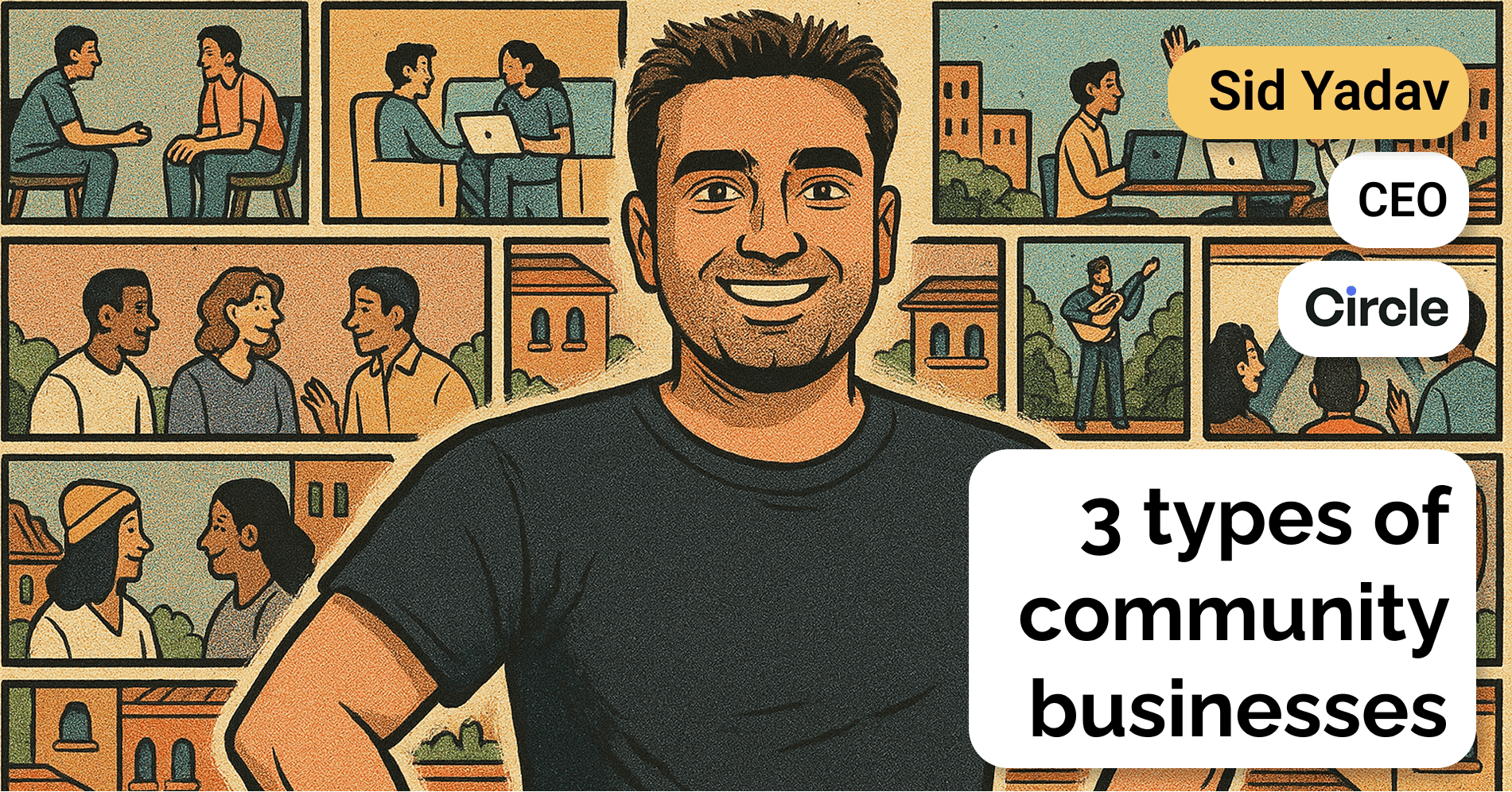Justin Gage, founder of Technically, on how Substack earns its 10% take rate
 Jan-Erik Asplund
Jan-Erik Asplund

Background
Justin Gage is the founder of Technically. We talked to Justin about what keeps his newsletter on Substack despite the platform's 10% take rate, his evaluation of the competition, and the problem of burnout among Substack writers.
Questions
- Can you share some background on your Substack and any stats on where you are as far as readership, revenue, % of top Substackers, etc?
- Can you talk a bit about how you ended up publishing on Substack? What attracted you most—the reading experience, publishing tools, built-in monetization, distribution, brand, something else?
- Did you look at Medium, which at the time was the incumbent in the space? How did Substack become the “default” blogging platform over Medium?
- How do you get new signups and grow your audience? Can you do a rough breakdown of where your readers come from—social, word of mouth, referral from Substack, SEO, etc?
- Do Substack’s analytics help you understand your business better, and does it drive retention for you to stay on Substack because you get potentially deeper metrics on how Substack is helping you grow your list?
- Producing long form email content consistently over a multiple year period is really challenging and there’s a lot of attrition. How do you think about burnout, what can Substack build and what does this mean for the long-term efficacy of Substack’s business which assumes that writers will publish weekly forever?
- How many of the methods of getting distribution that you've talked about come from tools within Substack?
- Do you see it as a liability or weakness for Substack that they’re unwilling to give writers these monetization tools as part of protecting that brand halo? Or does the focus on maintaining that halo ultimately benefit you as a writer on the platform?
- Substack Chat gives writers a Circle-like interface for having asynchronous group chats with their subscribers. Is that something you’ve used and seen meaningful engagement through?
- What other tools might Substack build to help writers monetize?
- Is there a logical breakpoint where you would decide to move off Substack?
- Can you talk through what the migration process would entail for you?
- What complaints do you have about the problem or what things do you wish that they would add to the platform?
Interview
Can you share some background on your Substack and any stats on where you are as far as readership, revenue, % of top Substackers, etc?
Substack has made a lot of it public recently, so you can check my page and see that I have around 49,000 subscribers. That used to be private information, but oh well.
In terms of paid, in the range of 2,000 or so, paying either $8 a month or $80 a year.
Can you talk a bit about how you ended up publishing on Substack? What attracted you most—the reading experience, publishing tools, built-in monetization, distribution, brand, something else?
I started my newsletter back in January of 2020, but actually, before that, I had started a different newsletter. I was job searching. I was having a tough time and I wanted to start writing to help me get through it, so I started a newsletter.
That newsletter doesn't exist anymore, but it’s how I found out about Substack. I had already set up a personal website, but the idea of having an email newsletter was intriguing to me, and Substack was the only company I knew of at the time that was really offering that kind of service.
I was aware of email providers like MailChimp, but Substack's idea of being able to send an email but also have it function as a blog post that you could link to was very attractive. When I decided to start, I just used Substack, and I didn't anticipate making any money from it, so I didn't evaluate other options. At the time, Ghost didn’t do paid newsletters and Beehiiv didn't exist.
Did you look at Medium, which at the time was the incumbent in the space? How did Substack become the “default” blogging platform over Medium?
I did look at Medium. The issue with Medium was that while they may have features like new post notifications now, they didn't used to have any form of email notifications—or any notion of building an email list, having access to emails, or seeing what each user has done, payments, etc. Their model was just different.
I had written and had some success on Medium before that—pretty much all of the stuff that I wrote that was most widely read were technical blog posts on Medium. But it just wasn't attractive to me for Technically.
In terms of cold hard features, Substack definitely came out leading on key features like building an email list, owning your audience, and stuff like that. It was easy to add paid subscriptions, which Medium still doesn't really do.
Those were pretty unique features. The big brain take, or at least a thought I've had, is that when you look at Substack's growth, a lot of it is cultural. People ask me why I don't switch off all the time. It's not so much brand allegiance. It’s more like: the cool kids are doing it.
It feels like my choice of platform is almost a reflection of my own brand. There are some little things about Substack that make it more appealing, like the styling being a bit more coherent and professional than Beehiiv. But I don't know if anything matters as much as the feeling that there's cultural momentum to what Substack is doing. That’s important to me as a writer.
How do you get new signups and grow your audience? Can you do a rough breakdown of where your readers come from—social, word of mouth, referral from Substack, SEO, etc?
That’s a tough question to answer because there's no graph on Substack for me to look at that says, "Here are the sources of your last new subscribers over the past 30 days." Well actually there is, but it’s basically impossible to read.
On a post-by-post basis, I can just see that, for example, 85% of the readership came from email and 6% came from direct.
The thing that drives the most sign-ups is simply writing new content. This is why most other newsletters are publishing at least once a week if not more. The more content you put out there, the more people have something to share, the more it can find its way to new people, and the more it gets posted on other social platforms.
Within that, there are some other ways to distribute. I've done guest posts with other newsletters, which is a good way to get in front of a new audience. I did a guest post with Lenny's newsletter in 2021 that drove a lot of new subscribers because our audiences were very compatible. Sometimes, people of importance will share it in a public forum. A big chunk of IBM is signed up for Technically because one of their sales leaders recommended the newsletter in a keynote to the sales organization. Little things like that help get in front of new audiences.
I do not run ads, although I think other newsletters do. I have done one or two cross-promotions where another newsletter will promote me in exchange for me promoting them, but I've done no paid sponsorships.
For the first year and a half, the newsletter was growing at a certain rate. It took me almost a year and a half to get to 10,000 subscribers. But then it took me less than six months to double that.
Somewhere around mid last year, Substack really started putting money and time into their recommendations feature. As a result, I saw a substantial increase in free subscriber growth. I added 10,000 subscribers in about four months because many newsletters, both small and large, were recommending Technically. Substack's UI has a default option for users to sign up for these other newsletters. Although this growth isn't ideal, as most of these people don't have high intent, don't read the newsletter, and don't convert to paid subscribers, it still contributes to the overall growth.
The growth then started to level out again. A lot of my free subscriber growth now is at the whim of whatever Substack is doing. I was on the front page at some point, which affected the growth as well. There are many wavy kinks in the graph due to changes Substack makes. At my scale, these can mean a meaningful difference in subscribers, not just two people, but more like 2,000 people.
Do Substack’s analytics help you understand your business better, and does it drive retention for you to stay on Substack because you get potentially deeper metrics on how Substack is helping you grow your list?
They have the worst analytics, man. There's a total visits graph, which is completely useless. Then there's an emails tab that shows every email you've sent, the open rates, and other metrics, but this information already exists on the post page, so it's not particularly meaningful.
The unsubscribes section is somewhat useful, as it shows why people unsubscribed. I found that most people are unsubscribing because I don't publish enough—a preventable issue that I won't prevent.
The subscriber report is new, and while it's an improvement, it's still quite basic. There's no good CRM where I can filter subscribers based on specific criteria, and do anything with that data (e.g. send a churn email).
You can't send targeted emails. For example, if I want to find free subscribers who have opened an email in the past week and send them a tailored email, that's not possible. The analytics are much better than they used to be, but ultimately, they're still not very good.
Producing long form email content consistently over a multiple year period is really challenging and there’s a lot of attrition. How do you think about burnout, what can Substack build and what does this mean for the long-term efficacy of Substack’s business which assumes that writers will publish weekly forever?
It's extremely true that burnout can be a significant issue for writers. I had been writing professionally for years before I started my Substack, so I was aware of that. To minimize burnout, I designed my newsletter to be published infrequently—every two weeks. As far as I know, I'm generating the most revenue among Substack writers with a cadence like that. There are a few exceptions, like Scuttleblurb, who drops a 50-page report once a month, but most Substack writers publish once a week or more frequently.
When you're constantly on the clock to publish something every week and dealing with high churn rates, burnout becomes a real concern. Deciding to publish infrequently gave me enough buffer to take breaks when needed. The nature of my newsletter isn't news-driven, so I can write multiple posts when I have free time and save them for later. If I were covering news or current events, I wouldn't have that flexibility.
I haven't done much of this yet, but I'm working on finding guest writers. My content isn't about me—I don't use my name, and no one really knows who I am—so I think it lends itself well to outsourcing.
What helps me stay motivated is engaging with readers and seeing their comments. Many people find my content helpful, and every post I publish receives positive feedback. Over time, it's easy to become desensitized to these comments, but I try to remind myself to slow down and appreciate the fact that my work is helping others.
How many of the methods of getting distribution that you've talked about come from tools within Substack?
It's all manual—for running or selling advertisements, Substack doesn't offer any facilities. I don't know if they should, as it's not necessarily something I would expect them to provide. There are some good reasons for that.
When you look at who's making the most money on Substack and what they're building the brand around, it's mainly political / news writers, not business-focused writers like Lenny. Most of these people are not really the kind of individuals who are actively trying to grow their audience, run ads, or build a business in the sense that a marketer at a startup would.
It's not like me and Lenny, who have worked at a startup and know how to grow things. Substack seems to cater more to the editorial writer rather than the business person writer. Many of the features, such as adding additional writers or organizing your homepage, are very much oriented towards this type of writer.
As for ads, I don't think Substack wants newsletters to be funded through them. Part of the whole idea behind Substack was to monetize via subscriptions. So, when I want to sell an ad, I'll either do a sponsored post explaining what a company does, or I'll include smaller banner ads. These ads are typically nestled within a post, and their success varies depending on the content they're placed in.
When it comes to finding sponsors, it's mostly inbound. I'll manually insert a horizontal line, add some copy and a logo, and include a link. There's no built-in functionality within Substack to enable ads or make this process easier.
Do you see it as a liability or weakness for Substack that they’re unwilling to give writers these monetization tools as part of protecting that brand halo? Or does the focus on maintaining that halo ultimately benefit you as a writer on the platform?
Beehiiv is taking the opposite approach, because Tyler (Tyler Denk, CEO at Beehiiv) worked at Morning Brew, which made all its money through ads. He strongly believes that a newsletter platform should come with some sort of native ad network. Substack's opposition to ads seems to be more ideological than a matter of not having gotten around to it or considering it too difficult to implement.
It's tough to say whether Substack will eventually offer ads. Most media companies do have some sort of advertising component, although the specifics may vary. Personally, I don't think Substack offering ad functionality would hurt the brand. It could even provide more options for creators to monetize their content effectively.
Substack Chat gives writers a Circle-like interface for having asynchronous group chats with their subscribers. Is that something you’ve used and seen meaningful engagement through?
I think for discussion-oriented Substacks, especially those focused on politics, having a subscriber chat feature makes sense. But for me, it's like, just send me an email.
Usually, the level of interaction depends on whether I prompt them or not. I have this mailbag sort of thing, "Ask Technically," that I send out to paid subscribers where I encourage them to send me questions.
With the database posts, I asked people to email me if they wanted to see a specific database on the list. Every time I publish something, I'll get comments or replies from people sharing their thoughts or experiences.
Starting a community and bringing these people together could be beneficial, but I just don't have the bandwidth to do that right now.
What other tools might Substack build to help writers monetize?
Ads would be the most straightforward option. I've made money on ads and subscriptions, and maybe to a lesser extent, expert network calls sourced from my brand.
Some writers, like Lenny, approach their newsletters as a business, doing everything they can to make it compelling. They may not be in it just for the writing, as they focus on expanding their business through various means. Examples of other writers who have built strong newsletter businesses include Byrne, Doug from Fabricated Knowledge, or even Matt Levine at Bloomberg.
These people are doing it for the writing. They want to build businesses, but their approach is closer to what I'm doing than to what Lenny is trying to accomplish.
As for other monetization options, ads are the most straightforward thing Substack could implement. We discussed the idea of scheduling meetings and charging for them, but it doesn't feel like a meaningful way to engage with an audience. Substack is trying to improve its platform, and features like chat are nice additions, even if they're not suitable for everyone. It's not a bad option, but it might not be the right fit for all writers.
Is there a logical breakpoint where you would decide to move off Substack?
Statistically, if you're on Substack, chances are you'll continue to use it. While other platforms might have some advantages, like being cheaper, the primary reason for considering a switch would be the cost savings. I'll likely pay Substack almost $20,000 this year, which is significantly more than the value I'm getting from them.
Substack's model of charging 10% can become a massive cost item for successful publications, leading some to consider moving to a different platform. Plus, I have an engineering background and understand the challenges of migrating from Substack to another platform, whereas most writers might not be able to handle that transition. I actually built a very basic version of a Substack clone just to get a sense of what it might take.
I'm not personally concerned about a mass migration from Substack, as I don't think any of the competing platforms offer something so fundamentally different that it would cause writers to leave en masse. While platforms like Beehiiv might have better ad networks and analytics, these improvements weren't enough for me to make the switch. Migrating would be a significant undertaking, and I don't think the benefits would outweigh the challenges involved. Price though… maybe.
Can you talk through what the migration process would entail for you?
Well, the first thing I need to do is really create accounts on these other platforms and look at what I can and can't do. The feature lists on the web are never enough. I need to examine the user interface and see exactly what I can and can't do to be able to make a value judgment on whether I can switch.
Then, there are a couple of things I need to do. I need to export all my Substack data, which takes about 10 minutes. I would need to check if these platforms have import facilities. I'm sure they do. There's some uncertainty with Stripe. I don't know how the Stripe integration would carry over. Is there a one-click solution to migrate all my Stripe subscriptions to Ghost or Beehiiv? I don't know. Maybe there is.
I would have to consider the fact that all of the posts would still exist on Substack, and they rank in search results. I guess I could either delete all of them and lose all of that, or maybe I'd redirect them somehow. I don't know if Substack would let me do that. They probably wouldn't let me redirect. So, all those links would become broken.
Alternatively, I could leave the posts up, and then people would keep subscribing to a Substack that no longer publishes new content. Maybe I'd have to build some sort of server that would take any new emails coming in from there and push them to the other platform. None of this seems easy, as there's just so much momentum. It would be difficult to move over. The real issue is the volume of content.
Also, when your content is time-bound, like Byrne's, the concern about moving platforms may not be as significant. Byrne did move off Substack, and I don't know if he's as concerned about people not being able to read the old posts. In my case, the content, like my piece on APIs, is just as relevant today as it was when I wrote it three years ago. It's very important to me that it stays up. Maybe that's not the case for other newsletters.
What complaints do you have about the problem or what things do you wish that they would add to the platform?
Disputes are a huge issue. People are either too lazy or too stupid to unsubscribe on Substack so instead they dispute the charge on their credit card, literally even for an $8 charge. That costs me the charge, a fee on top of it, and trust with the payment processor. Just email me! I’ll give you your money back!
These disputes are very frustrating for Substack writers. I've seen people dispute small charges, and I'll usually reach out to them to understand what happened. Sometimes they don't respond; other times, they say they couldn't log in to Substack to cancel, so disputing the charge seemed like the path of least resistance. This issue is a universal topic of complaint among Substack writers.
Disclaimers
This transcript is for information purposes only and does not constitute advice of any type or trade recommendation and should not form the basis of any investment decision. Sacra accepts no liability for the transcript or for any errors, omissions or inaccuracies in respect of it. The views of the experts expressed in the transcript are those of the experts and they are not endorsed by, nor do they represent the opinion of Sacra. Sacra reserves all copyright, intellectual property rights in the transcript. Any modification, copying, displaying, distributing, transmitting, publishing, licensing, creating derivative works from, or selling any transcript is strictly prohibited.




